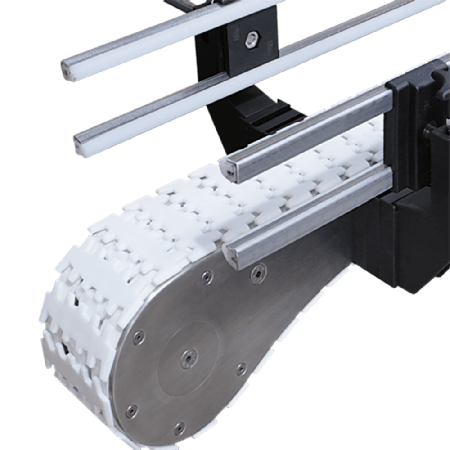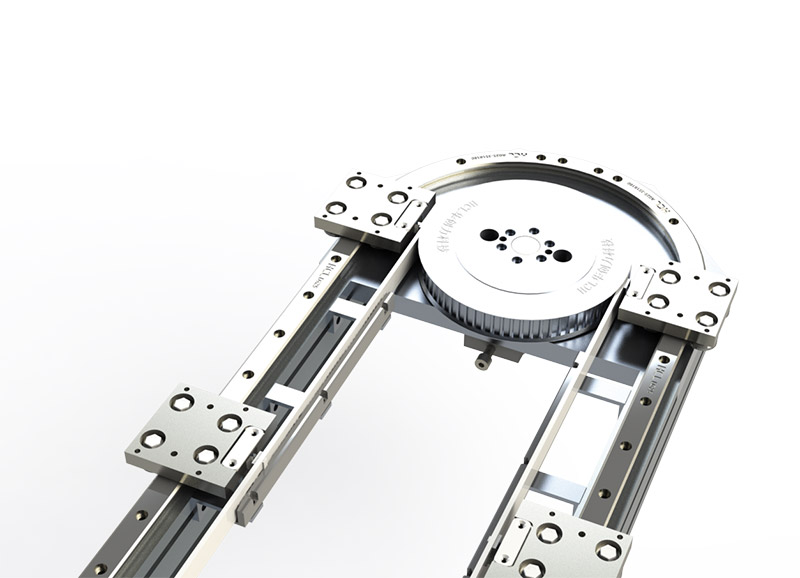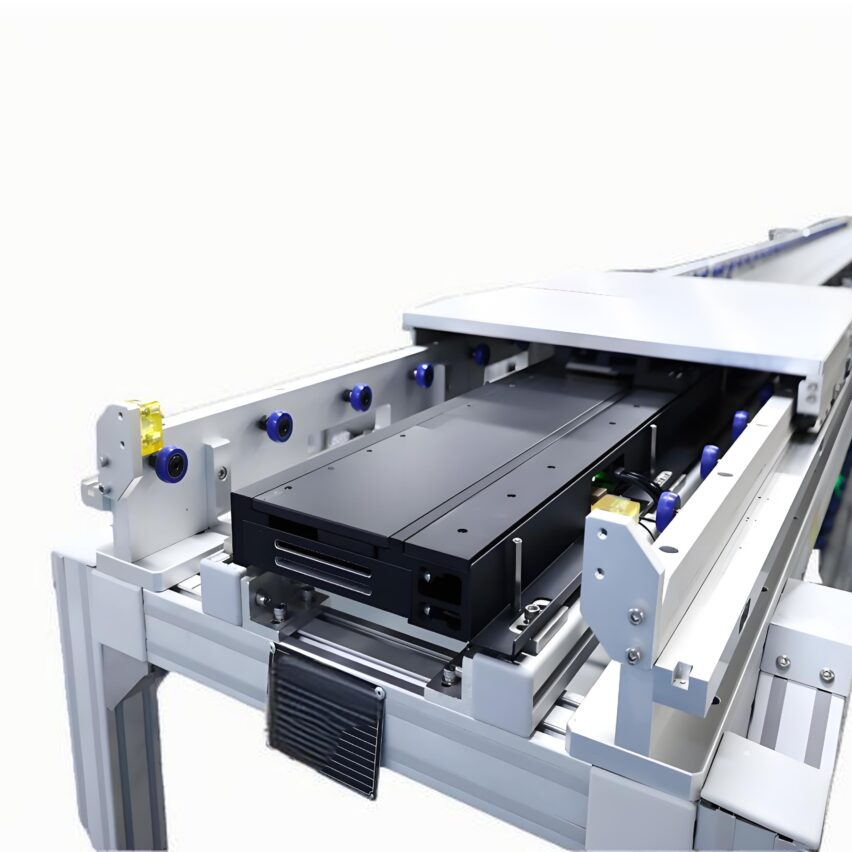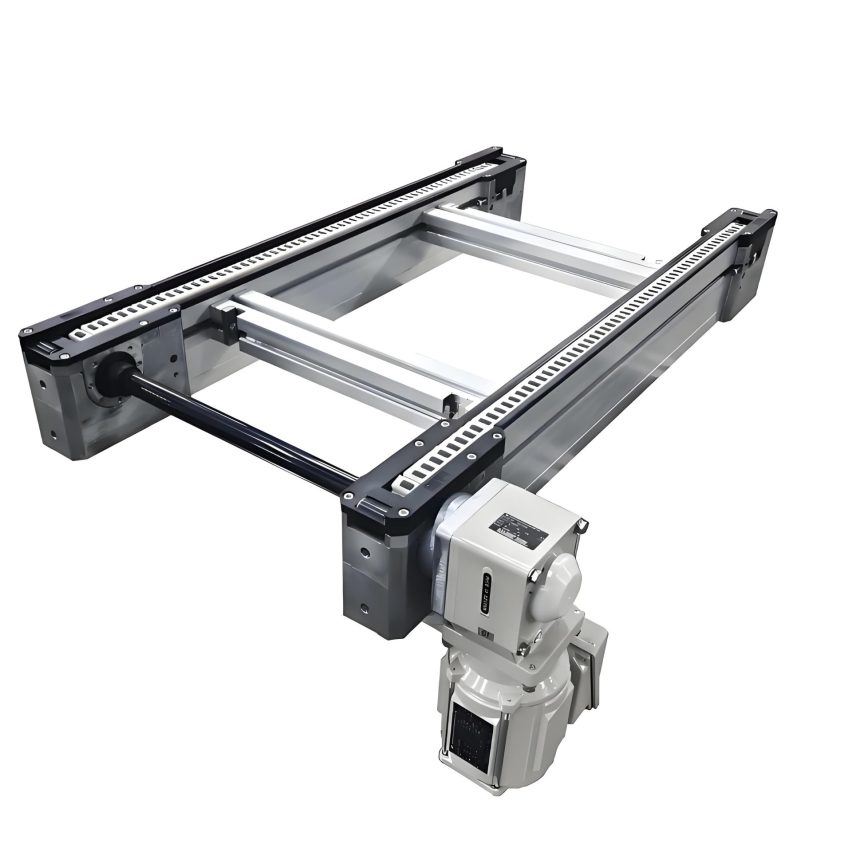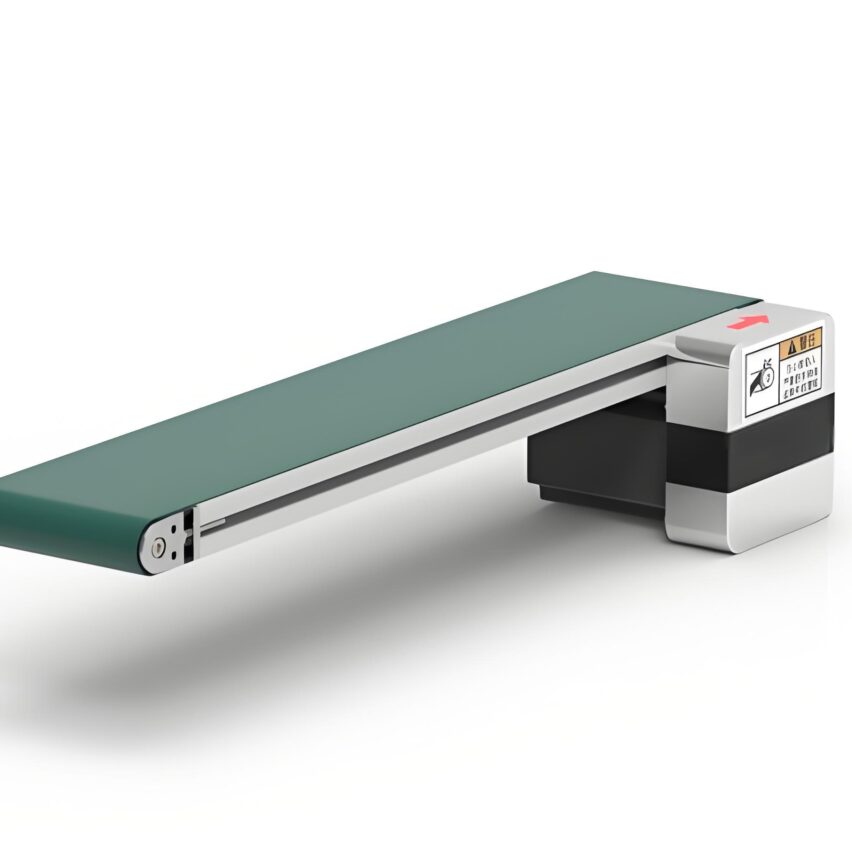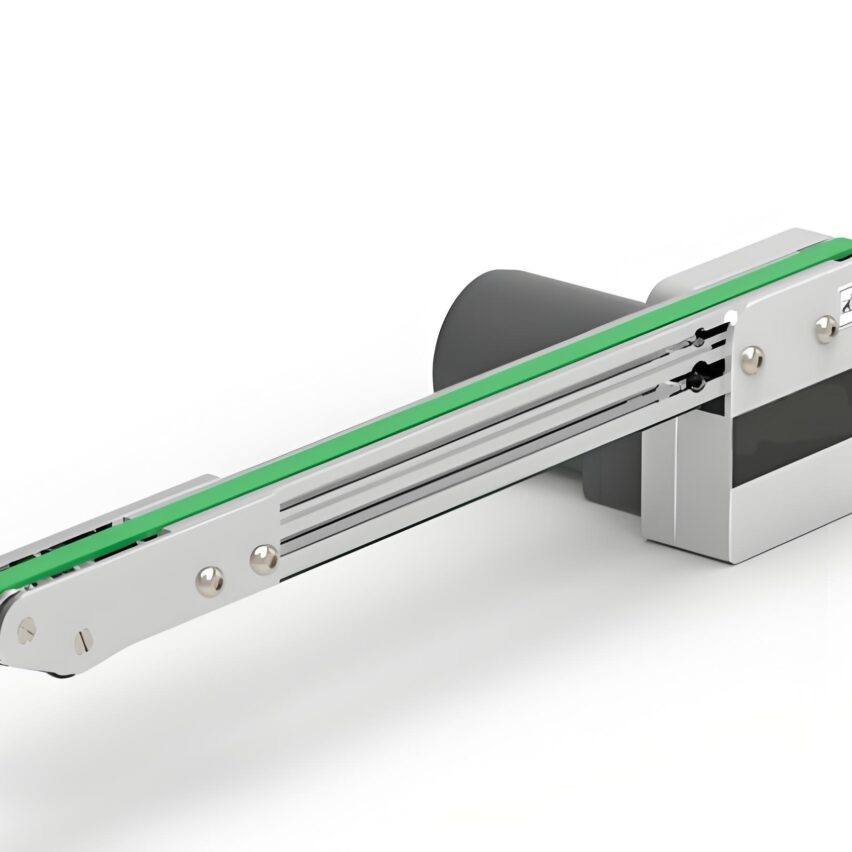Are you confused by the suspension conveyor line in the workshop like a "long dragon"? Single-machine drive is always a problem, and the synchronisation of multiple machines is like walking on a tightrope? Don't panic! Let's useThe big vernacular dismantling drive system selection doorwayThe first thing you need to do is to read it and get a good idea of what's going on!
🔧I. What is the drive system? Why is it so important?
Simply put, the drive system is the "heart" of the suspension chain, determining whether the chain can beCarry, run and stop.. It usually consists ofMotor + reducer + transmission mechanism (belt/chain)Ingredients. Imagine: you're riding a bike, the legs are the motor, the gears are the reducer, and the chain is the drive mechanism - pick any of the wrong parts and you can be tired and spit out blood climbing a hill!
The most common pitfalls that newbies step into are.Thought the more powerful the motor the better. The result? Either the electricity bill goes through the roof or the synchronisation gets out of control. We have to remember.Matching is the way to go!
⚙️II. Stand-alone drive: when does it carry the load?
Stand-alone drive (a motor to pull the entire line) is not impossible to use, the key depends on the scene! According to the industry experience, when the following conditions are met, a single machine is completely sufficient:
- Conveying distance ≤ 500 metres(Almost one lap around a standard playground)
- Total load ≤ 5 tonnes(approximately equal to 3 small cars)
- Turning points ≤ 3The more bends, the more resistance.
- Climbing height ≤ 10 metres(Equivalent to a 3-storey building)
✅cutting edge: Simple structure, low cost and maintenance saving.
❌Achilles' heel:.Chain tension increases dramatically after 500 metres.The risk of overloading the motor and breaking the chain skyrockets! Not to mention the risk of "saw blades" wearing out the curves under heavy loads.
💡case studies: A refrigerator factory assembly line is 300 metres long, 10kg/station, and the single drive is as steady as an old dog; but replace it with a 700-metre axle coating line? Directly collapse chain strike!
🔌Third, multi-machine drive: what signals tell you "it's time to add a motor"?
Don't hesitate when you notice the following symptoms on the birth line -It's time to get on the multicomputer!::
- Frequent jumping of chain teeth(Uneven loading)
- Tensioning device loosening and tightening(Speeds out of sync)
- The motor heats up like a frying pan.(single machine overloaded with hard labour)
- Monthly chain change at the bends(localised wear too fast)
Refer to this "three-look" principle for specific configurations:
| parameters | stand-alone driver | dual driver | triple-engine drive |
|---|---|---|---|
| Conveying length | ≤500 metres | 500-800 metres | >800 metres |
| Maximum load | ≤5 tonnes | 5 to 15 tonnes | >15 tonnes |
| Climbing height | ≤10 metres | 10-20 metres | >20 metres |
| turning point | ≤3 | 4 to 6 | >6 |
📌(knock on the) blackboard: Multi-machines are not simply adding motors!Synchronised control is the key.-Consequences of being out of sync? A minor shutdown, a major pulling of the chain (70 tonne loads collapsing the chain is no joke).
🤖IV. Multi-machine synchronous control: who smells better in the three major programmes?
How to make several motors "in step"? The mainstream industry has 3 tricks, the advantages and disadvantages are compared as follows:
-
Master-slave inverter control (cost-effective choice)
- theory: Motor 1 with encoder as master, motor 2/3 with its speed (slave)
- (manufacturing, production etc) costs: Medium-low (per inverter + PLC programme)
- accurate:: ±5% (adequate but don't expect precision)
- applicability: Light to medium load scenarios (e.g., appliance assembly line) for the 90%
-
Displacement feedback closed loop (steady as an old dog)
- theory: Installation of displacement sensors in the tensioning device, real-time adjustment of the speed of the slave motor
- (manufacturing, production etc) costs: Medium-high (sensor + control module)
- accurate: ±1% (choose it for heavy loads with lots of curves!)
- applicability: Frame spraying, heavy machine production line (load >10 tonnes must!)
-
Fully independent servo drive (exclusive for tycoons)
- theory: Individual encoder + servo controller for each motor
- (manufacturing, production etc) costs: High (double the price of the servo system)
- accurate: ±0.1% (required for precision assembly lines)
- applicability: Automotive assembly, high-precision electronics line (not bad for closing your eyes)
💬personal experience: Small and medium-sized factories should not blindly chase after servos!Master-slave control + displacement feedback combo(e.g. 1 master, 2 slaves + key point displacement sensor) is the price/performance ceiling - cost is manageable and stability is not compromised.
📐V. Drive configuration of key parameters: miscalculation of a total collapse!
You can't choose a motor by feel! These 4 parameters must be dead on:
-
Traction (F)::
F = μ × (G-chain + G-load) × g- μ = coefficient of friction (0.25 for steel chains), g = 9.8
- algorithm: 100m chain + 2 tonnes of cargo → F=0.25×(800kg+2000kg)×9.8≈6860N
-
Motor power (P)::
P = (F × v) / (60000 × η)- v = linear velocity (m/min), η = mechanical efficiency (take 0.8)
- take up the example above: When v=5m/min → P=(6860×5)/(60000×0.8)≈0.71kW →Select 1.1kW motor (leave a margin!)
-
Reduction ratio (i)::
i = rated motor speed / required speed- Demand speed =
(v × 1000) / (π × D sprocket) - When sprocket diameter D=200mm → demand speed=(5×1000)/(3.14×200)≈8r/min → 4-pole motor 1500r/min when i=1500/8≈188
- Demand speed =
-
safety factor:.Heavy load/multi-curve scenario power x 1.5 times!Don't save that money, one repair is enough to buy three motors.
🛠️Sixth, the maintenance of anti-pits guide: so that the maintenance of more than 5 years!
Even the best system has to lie down without maintenance! Remember these 3 tips to extend the life:
- Lubrication against dry wear: ChainWeeklyGrease (molybdenum disulphide grease for high temperature areas)
- Tension monitoring:.Tensioning stroke measured monthlyThe deviation from the initial value of 10% is adjusted immediately.
- Motor check-up:.Quarterly motor temperature rise checksIf it's over 70C, check the bearings!
🚨lesson learnt through blood and tears: A factory skipped displacement sensor maintenance, and as a result, the tensioner jammed and didn't notice -Pulled 3 chains in 8 hoursThe loss of production is enough to install 10 sets of sensors!
🚀VII. Practical case: how to deal with 80 tonnes of heavy-duty line in automobile factories?
Finally, I'll dump a hardcore case study: a 560-metre axle line for a car company.Total load 70 tonnes + 12 bendsThe original programme was driven by a single machine -The motor burns twice in three days! After the transformation:
- Driven in three segments: 3 x 3kW motors (1 master, 2 slaves)
- Displacement feedback: ±3mm accuracy sensor for each tensioning point
- Safety Redundancy: overloading of the elastic base triggers the travel switch to cut off the power supply
- frequency conversion: Speed fluctuation <1%.Electricity bills have gone down by 151 TP3T in reverse.
Look.Choosing the right system isn't about spending money, it's about making money!The line is now running 24 hours a day with almost zero breakdowns.
💎Exclusive advice: follow this for new handwriting assignments!
If you're still struggling, just apply the formula:
- Light load within 500 metres→ stand-alone drive + safety pin protection
- 500-800 metres medium load→ Dual machine master-slave control + displacement feedback
- 800 metres + heavy load→ 3-machine independent servo (or master-slave + displacement double insurance)
Remember.The drive system is not the more expensive, but the more right it is!Next time someone tells you to "go straight to the servo", ask them first.Is this money well spent or not?




